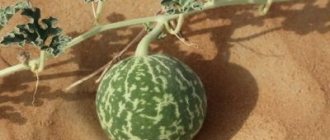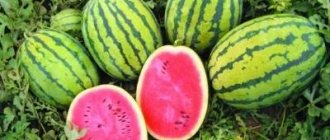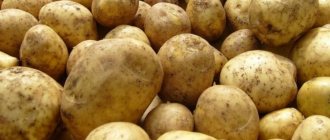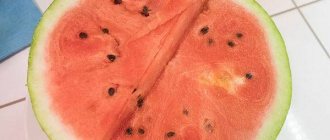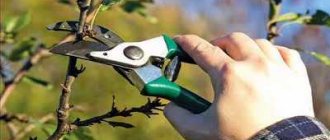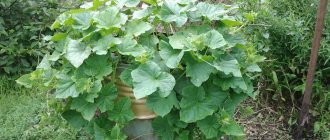Who developed the “Farmer” variety?
Despite persistent varietal characteristics, “Farmer” is not included in any register of agricultural crops. This variety is the fruit of folk selection. Various farms took part in its breeding. Selection lasted for many years, farmers sought to obtain a variety ideal for growing for sale. The result was potatoes that were profitable. “Farmer” not only has excellent agrotechnical characteristics, but also produces a presentable harvest - large tubers, beautiful in appearance and tasty when cooked.
Origin and region of planting of the variety
The Farmer potato is a product of folk selection, so it cannot be found in the list of officially registered varieties. This variety of tuber crop was obtained naturally as a result of many years of potato cultivation by various farmers. The author and exact date of creation of the Farmer variety are unknown, but it is very popular among gardeners.
Did you know? The homeland of potatoes is South America - there they were cultivated by the Indians of Peru 4,000 years ago.
This type of potato can be grown in any region with a temperate, continental or sharply continental type of climate, so it is widespread in Ukraine, the Republic of Belarus and almost all regions of Russia.
Maximum yields can be achieved by planting crops in regions with the following climate characteristics:
- temperature regime: +15…+20 °С;
- sunny and long summers;
- the presence of periodic but short-lived rains;
- no sharp temperature fluctuations during the day.
Description and characteristics of the variety
When growing potatoes for sale, farmers and gardeners are in an eternal search for the ideal variety. By breeding their hybrid, breeders from the people sought to obtain a universal potato that would be profitable in any weather conditions and would be in demand among buyers. The main characteristics of the “folk selection hybrid” are in Table 1.
Table 1
| Characteristics | |
| Maturation category | very early |
| Maturation period, days | 40-60 |
| Starch, % | 9-12 |
| Mass of tubers, g | 90-110 |
| Number of tubers in one bush, pieces | 10-15 |
| Productivity, c/ha | 200-230 |
| Tuber shape | oval-elongated |
| Peel | smooth, thin, yellow |
| Flesh color | light yellow |
| Consumer qualities | tasty, does not get soggy when cooked, suitable for frying and dietary food |
| Keeping quality % | 95 |
| Attitude to diseases | can be affected by late blight, resistant to nematodes and potato canker, requires treatment for the Colorado potato beetle |
| Features of cultivation | Can be grown from seeds, responsive to fertilizing and watering |
| Appearance of bushes | medium-sized and erect bushes, branches grow compactly, not spreading |
| Appearance of leaves | bright green with slightly wavy edges and clearly defined veins |
| Bloom | white flowers collected in a compact corolla |
| Degree of foliage | average |
The harvest, according to gardeners, is ready 50-60 days after planting the seeds. And if the weather is favorable, digging can begin in 40 days. The variety is grown in two ways - tubers and seeds. The tops remain juicy for a long time - up to 90 days from the moment of germination.
Harvest and storage
The ripening time for potatoes depends on the growing method and the climate of a particular region, so the harvest of ripe tubers is harvested from late July to mid-August. The main sign that indicates the maturation of a vegetable crop is the massive yellowing of plant tops.
The Farmer's basic rules for harvesting and storing potato crops are listed below:
- Potato harvest is best harvested on a warm and sunny day;
- each bush is carefully dug up with a shovel or pitchfork, and then the potatoes are picked out of the ground by hand;
- the tubers are cleared of soil and placed in baskets, protecting them from shock and mechanical damage;
- before storing tubers, they are dried for several days in the shade under a canopy;
- after drying, potatoes are sorted by size, and damaged specimens are removed;
- It is recommended to store potatoes at a temperature of +2...+5 °C in a dark and dry room with good ventilation.
Important! In favorable conditions, Farmer potatoes can be successfully stored until spring, and the keeping quality of the variety is at least 90%.
Farmer potatoes are invariably popular among many gardeners due to their positive characteristics that distinguish them from other varieties. Using the tips and recommendations for growing this crop listed in this article, you can get an early harvest of selected potatoes with excellent taste and attractive appearance.
Advantages and disadvantages of the “Farmer” variety
The variety is universal - it grows in any climate and in any weather conditions. “Farmer” develops excellently even at temperatures of +10…+15°C. But the largest harvests can be harvested under the following conditions:
- warm and mild climate;
- minimum number of temperature changes;
- fertile soils and timely moisture.
table 2
| Advantages of the “Farmer” variety | Disadvantages of the "Farmer" variety |
| It is universal in preparation - it does not get soggy, retains its shape when frying, and is suitable for preparing semi-finished products - frozen French fries, etc. | Demanding on the quality characteristics of the soil - needs fertilizing. |
| It is not afraid of diseases that affect nightshades - cancer, nematodes, viruses and fungi. | |
| High shelf life with early ripening. | |
| It is well preserved and transported - it does not lose its presentation, the tubers do not sprout or wrinkle. | |
| Excellent taste characteristics of tubers. | Requires moderate moisture. |
| High yield. | |
| Fruits well in any climate - temperate, northern, tropical. | |
| Resistant to degeneration - seeds can be used without renewing for 5-6 years. | |
| Early and friendly formation of tubers. |
As you can see, the variety has practically no disadvantages, and fertilizing and moistening are the usual requirements for the successful cultivation of vegetable plants.
Diseases and pests
The variety is resistant to the main diseases of nightshades: potato canker, golden cyst nematode, and various viruses. Early ripening saves bushes and tubers from late blight.
When the first signs of late blight are detected, it is recommended to dig up the potatoes. To prevent diseases, it is necessary to pre-plant the soil with fungicides, treat the tubers, as well as proper crop rotation.
Every 2-3 years, potatoes are planted in a new place. Preferred areas are areas where meadow grasses, cabbage, and legumes were grown.
In the southern regions, potatoes suffer from Colorado potato beetles, aphids, and cicadas. They are attracted by the lush tops, which retain their freshness for a long time. Weeding and spraying with insecticides will help protect the plantings.
style=»display:block; text-align:center;" data-ad-layout=”in-article” data-ad-format=”fluid” data-ad-client=”ca-pub-2120637657928280″ data-ad-slot=”1994686330″>
Comparison of "Farmer" potatoes with other varieties
To assess the yield and profitability of a variety, we compare it with popular potato varieties according to several indicators. Table 3 shows a comparison by yield, and Table 4 shows a comparison of tuber weight and keeping quality.
Table 3
| Variety name | Productivity, c/ha |
| Farmer | from 200 |
| Kairanda | 110-320 |
| Riviera | 280-450 |
| Zhukovsky early | 350-450 |
| Veneta | 250-350 |
| Karatop | 200-500 |
| Minerva | 200-450 |
| Forty days | 200-300 |
| Meteor | 200-400 |
| Jewel | from 700 |
Table 4
| Variety name | Weight of marketable tubers, g | Keeping quality, % |
| Farmer | 90-110 | 95 |
| Riviera | 100-180 | 94 |
| Zhukovsky early | 100-120 | 92-96 |
| Veneta | 70-95 | 87 |
| Karatop | 60-100 | 97 |
| Kiranda | 90-175 | 95 |
| Minerva | 120-245 | 94 |
| Meteor | 100-150 | 95 |
How to choose a place to plant potatoes?
Potatoes grow best in light, slightly acidic, fertile soils. The highest yields are obtained from plantations planted on black soil or peat soils. Good potato productivity is also observed on sandy, sandy loam and loamy soils, but only if fertilizers are applied - mineral and organic. Characteristics of an ideal potato plot:
- soil – black soil;
- illumination – a lot of sun, no shading;
- wind - a quiet place, without drafts;
- groundwater – high level, not less than 80 mm in the horizon up to 1 m.
Potatoes do not welcome excessive moisture, but due to the high level of groundwater, the plants will be able to survive drought without damage to the crop. This is especially important for regions that experience dry summers.
The best predecessors for potatoes:
- legumes - everything grows well after them, including potatoes;
- green manure crops - rye, oats, etc.;
- onion;
- cabbage;
- cucumbers;
- pepper;
- carrot;
- beet;
- garlic.
Undesirable predecessors – all nightshade crops:
- eggplant;
- tomatoes;
- pepper and others.
Planting potatoes after nightshades not only reduces yields, but also has an adverse effect on the epidemic situation. In order for the “Farmer” variety to produce good yields, it is necessary to follow the rules of small crop rotation. The main principle of this system is a mutually beneficial sequence of crop cultivation, which allows the soil fertility to be restored after potatoes.
Potatoes cannot be grown in one place more than once every three years.
Crop rotation scheme:
- 1st predecessor – green manure crops. Sowed in the fall - after harvesting potatoes. Young shoots are mowed down before frost. Grass is left on the field - it will rot and become fertilizer.
- 2nd predecessor – cucumbers, pumpkin, zucchini or cabbage. Sown after green manure crops.
- 3rd predecessor – legumes. Restores soils, saturates with nitrogen fertilizers.
Planting and growing potatoes
To prevent tubers and the green part of plants from being subject to fungal diseases, crop rotation must be observed. The crop cannot be planted after peppers, tomatoes, eggplants, with which potatoes have the same diseases.
Note! Good predecessors are peas, beans, cucumbers, zucchini, pumpkin.
Preparing for landing
Before planting the tubers, they are germinated for 20-40 days. To do this, they are laid out in boxes in 1-2 layers. First, the potatoes are kept in a room with a temperature of 18-20 ° C for 10 days. Then the boxes with root vegetables are transferred to a room where the temperature does not exceed 10-14 °C.
Sprouted tubers are planted in the ground
There may be spores of pathogenic microorganisms on the surface of the tubers, so they need to be disinfected. To do this, farm potatoes are placed for 20-30 minutes. into a weak solution of potassium permanganate.
How to prepare the soil?
Preparing the soil for planting is necessary for:
- eliminating weeds and pests;
- oxygen saturation;
- giving a favorable structure.
Preparation stages:
- In the fall, before frost, tops, weeds, and debris are removed from the area. Carefully dig up the soil to a depth of 30 cm. If you dig small grooves, then in the spring it will be possible to drain excess moisture from the site.
- In the spring, when the snow melts, the soil is leveled with a rake to maintain its moisture. Mineral or organic fertilizers are scattered over the surface, digging is done in the spring and leveled again with a rake.
In autumn there is no need to level the soil with a rake. Thanks to rough plowing, the soil will freeze well - this will kill the pests in it.
How to grow a Farmer from seeds?
Growing potatoes of this variety from seeds is more difficult than from tubers, but it is extremely important to maintain varietal characteristics. Why grow potatoes from seeds:
- Update genetic information. If you plant tubers year after year, the variety will gradually degenerate. After growing from seeds, the new generation can exhibit properties from either parent, or qualities completely different from the parents.
- Increases resistance to disease.
Where do you get the seeds?
On potato bushes, flowers, when fertilized, form fruits. Seed collection procedure:
- Green berries are collected from the bushes - they contain seeds.
- The collected berries are kept for several days to soften.
- The seeds are extracted from the berries. They are washed and placed in a canvas bag, which is hung to dry and ripen.
Seeds obtained in this way have low germination rates - therefore gardeners advise preparing a large number of seeds. The second option is to buy ready-made seeds from a trusted supplier.
Difficulties in growing potatoes from seeds
Difficulties awaiting gardeners who decide to grow seedlings from potato seeds:
- The seedlings have a weak root system - difficulties arise when it grows. It is necessary to create the most favorable soil conditions - the soil should be soft, light, loose, and well conductive to air. For seedlings, you can use special purchased soil. Another option is to use wet sawdust instead of soil.
- Potato shoots are fragile - thin shoots need a lot of light, otherwise they will not grow. If the light source is located far from the seedlings, they will stretch out and weaken. When picking and replanting, special care must be taken - you can easily damage the roots or sprouts.
- Potato seedlings are susceptible to blackleg disease. To prevent infection, preventive soil treatment is carried out using black yeast or trichodermine.
How to prepare seeds for planting?
Before planting in the ground, the seeds should be properly prepared:
- Soaking - to speed up germination. The seeds are scattered on a saucer and filled with water.
- Hardening. It is carried out simultaneously with germination. During the day, the seeds are kept at room temperature, and at night - in the refrigerator. Hardening is carried out over 2 days.
- The water is drained, the seeds are laid out on a cotton piece of cloth, and placed in a warm place. Gauze is not suitable for these purposes - the thinnest roots will grow through its cells, get tangled and damaged.
Planting seeds
The procedure for planting germinated seeds:
- The seeds are sown in a container and spread evenly on the ground. Sprinkle a small layer of sand on top - weak shoots may not germinate through the soil.
- The container with the seeds is watered. Cover the top with film or glass to create a small greenhouse. Growing conditions:
- a warm and well-lit place;
- optimal hydration - drying out or waterlogging is not allowed.
- The film/glass is removed daily to ventilate the seedlings.
- After 3 three days, shoots appear. The maximum period is 2 weeks.
Seedlings need a warm place with no drafts. Window sills are a bad option; here the seedlings will be uncomfortable due to the cold air emanating from the windows.
How to pick seedlings?
As soon as two leaves appear on the potato seedlings, the seedlings can be transplanted into separate pots. Picking (transfer) rules:
- Pots must have drainage holes;
- seedlings transplanted into pots are watered with phytospirin - along the edge of the container, preventing the solution from getting on the sprouts;
- The soil in the pot should always be moist, but not soggy.
Seedlings in pots must take root and grow until planted in open ground.
How to plant seedlings in open ground?
Planting can begin as soon as the threat of frost subsides - towards the end of May. The exact timing depends on the climatic conditions of the region and specific weather conditions. By the time of planting, 4-5 leaves should appear on the sprout. If the threat of frost remains - there are regions where they can happen even at the end of May - then cover the beds with film. Disembarkation order:
- Prepare holes at intervals of 20 cm. Depth - 10 cm.
- Pour humus into the holes and pour it generously with water.
- Plant the seedlings, deepening them so that only 3 leaves remain on the surface.
If seedlings are planted in heavy clay soils, it is recommended to add a mixture of sawdust, humus and sand, taken in equal parts, to the holes.
Modern agronomy allows for a variety of options for planting potato seedlings, but, most often, vegetable growers use a row pattern. Use a garden marker for marking. The interval between rows is 60-70 cm. Between bushes is 20-25 cm. The depth of the holes is chosen taking into account the type of soil:
- chernozem and sandy soils – 10-12 cm;
- clayey – 6 cm.
Potato bushes grown from seeds require standard care:
- timely weeding and loosening;
- 2-3 hillings per season;
- poisoning of the Colorado potato beetle.
Experience has shown that the Colorado potato beetle primarily eats potato bushes grown from seedlings, so they will have to be treated more often than when grown from tubers.
In the video, a specialist talks about growing potatoes from botanical seeds, and you will also learn about the features of obtaining pure seed material:
Planting with tubers
It is this method of planting potatoes that most gardeners and farmers use to obtain tubers - commercial and seed. The most critical stage in this case is the preparation of tubers:
- Tubers for planting are selected in advance - even during harvesting, and are stored separately from the general potato mass.
- Seed potatoes are sorted out in a timely manner, removing diseased or rotten roots.
Tubers are not taken for planting - small, too large, irregularly shaped - all of them will give a low and poor-quality harvest. The best planting material is healthy medium-sized tubers. To increase the amount of valuable planting material, the tubers can be cut into pieces. Cut root vegetables with a disinfected knife.
Preparing the beds
Tillage begins in the second half of April. For any variety, and “Farmer” is no exception, you need to create a loose, moist layer of soil. The area for potatoes is always dug up twice - in autumn and spring.
If potatoes are grown on the plot for the second year, you don’t have to dig the soil in the fall - just clear the plot of plant residues.
Next, the soil is prepared depending on the chosen growing technology:
- Comb. To increase potato yields, they are often grown using ridge technology - it improves soil aeration. This technology is especially effective in humid climates, and it is recommended for loamy and clay soils. The technology is used only by experienced farmers - cultivators are needed to cut the ridges.
- Smooth. This type of planting does not require the formation of ridges; it is usually used in arid regions.
- Trench. Requires mechanization or physical strength.
Gardeners prepare their beds in the fall by digging up the soil and adding fertilizer along the way.
Planting tubers in the ground
The planting is located on the south side, in the direction of the north - this allows the plantation to be provided with uniform lighting. Before planting tubers, peat, humus, and wood ash are added to the holes or trenches. It is also recommended to add onion peels - they repel Colorado potato beetles well.
Between tubers placed in the ground, the interval is set depending on the ripening period:
- early varieties - 30-35 cm;
- late varieties – 25-30 cm.
The spacing between rows also depends on the ripening category:
- early varieties - 60 cm;
- late varieties – 70 cm.
The depth of planting tubers depends on the type of soil:
- heavy and loamy – 8-10 cm;
- clayey – 4-5 cm;
- light – 10-12 cm.
All parameters are designed for medium-sized tubers; if the size increases or decreases, adjustments are made, but not more than 3 cm.
Caring for potato plantings
After planting tubers or seedlings in open ground, the task of farmers and gardeners is to ensure optimal growing conditions. Almost all potato varieties cultivated in Russia require the same care - they must be loosened, hilled, watered and fed with fertilizers in a timely manner.
Watering and hilling
To get a high yield, the soil under the bushes needs to be loosened and moistened. It is important to maintain optimal humidity conditions. Hilling rules:
- After each watering, the soil must be loosened.
- Potato bushes should be hilled in the morning or evening.
- The first hilling is done when the bushes grow to 12-15 cm in height.
- The second hilling is done 20 days after the first.
More useful information about hilling potatoes can be found here.
Watering does not have a clearly defined time frame - it depends on specific weather conditions, soil conditions and the region. Under normal weather conditions, three waterings may be enough for potato plantations:
- 1st – when shoots appear;
- 2nd – when the buds appear;
- 3rd – when the potatoes fade.
The "Farmer" variety grows best at low temperatures - summer heat has a negative impact on the harvest. Thanks to early ripening, it is possible to avoid the most unfavorable period - the July heat. Vegetable growers recommend using drip irrigation to moisten the soil, and mulching to control weeds and prevent soil drying out. Straw or grass clippings are used as mulch.
What to fertilize with?
Regardless of whether potatoes are grown for seeds or for food/sale, they need to be fertilized. This crop is fed with humus or compost.
During the season, fertilizers are applied 2-3 times:
- The first feeding is 2 weeks after emergence.
- The second is during flowering and tuber setting.
Fertilizers of different natures are used for fertilizing:
- Organic. Potatoes can be fed with diluted manure, bird droppings, and herbal infusions.
- Mineral. Gardeners most often fertilize potato plantings with urea, superphosphate, potassium sulfate, and ammophos.
The planting needs to be fed 1-2 times per season with complex fertilizer - with potassium and magnesium. Foliar feeding is also necessary - you can, for example, spray the bushes with a superphosphate solution. The timing and rates of fertilizer application are in Table 5
Table 5
| During landing | |
| Type of fertilizer | How to deposit |
| Rotted manure | 200-250 g together with mineral supplement |
| Chicken droppings | dissolve in water 1:15 (per well – 1 l) |
| Plant waste | 0.5 liters of herbal infusion is applied along with mineral fertilizers |
| Wood ash | 150-200 g - applied without mixing with other fertilizers |
| Complex mineral fertilizer | 15-20 g per hole |
| After emergence of shoots - fertilizing at the roots | |
| Chicken droppings | solution (1:15) infuse for 24 hours and add 1 liter under the bush - after abundant watering |
| Mineral fertilizer | urea solution - 20 g per bucket, add 1 liter per bush |
| Before flowering | |
| Potassium-phosphorus fertilizer | 20 g potassium sulfate + 60 g ash or 60 g superphosphate per 10 l |
| 1 feeding after flowering - to improve the taste of tubers | |
| Microfertilizers | fertilizer "Mag-Bor", 1 tbsp. l. for 10 l, for 1 bush – 5 l |
| 2 feeding after flowering | |
| Superphosphate | apply 300-400 g per hundred square meters or spray with a solution - 100 g per 10 liters of water |
A specialist vegetable grower talks about the features of fertilizing potatoes, and you will also learn what, how and when to fertilize potatoes in order to get a bucket of tubers from the bush:
How to deal with pests and diseases?
The “Farmer” variety is resistant to most diseases that affect potato plantations. The main enemies of the variety are late blight and the Colorado potato beetle, and the fight is directed against them. Control measures are in Table 6.
Table 6
| Colorado beetle | Late blight |
| Control measures | |
| Manual collection of beetles and larvae. | If the first signs of late blight are noticed, the potatoes should be dug up. |
Spraying with insecticides:
| Before planting, water the area with fungicides:
|
| Deep digging of the soil. | Dressing of seed material. |
| Planting plants that repel the Colorado potato beetle - calendula, dill, tansy, nasturtium, etc. | Compliance with crop rotation rules. |
| The use of herbal infusions for spraying. | |
Potatoes are treated with fungicides according to a certain scheme:
- The first spraying is for prevention, carried out before signs of the disease appear. The signal for preventive treatment is when the tops close in the rows - their height will be approximately 15-20 cm.
- The second spraying is 1-1.5 weeks after the first.
- The remaining time is until the tops are harvested, the plantings are sprayed once a week - if the weather is dry, and if it rains - every 4-5 days.
Features of spraying potatoes against the Colorado potato beetle:
- It is recommended to spray early potato varieties, which include “Farmer,” from the moment the eggs appear - the females lay them on the underside of the leaves.
- The interval between adjacent sprayings is 15 days. The processing time also depends on the type of poison used.
- The last spraying should be carried out 14 days before harvesting, no later - otherwise the tubers will contain poison.
- The best weather for processing is dry, windless weather. If there is high humidity outside, the effectiveness of etching is reduced many times.
You should not spray potatoes if dew appears - the effect is reduced, since the poison is diluted with water. You should also not work with poisons in extreme heat - you can get poisoned.
- It is not recommended to spray potatoes during flowering. It is better to collect beetles and larvae by hand. During flowering, the plant is vulnerable to chemicals, and, in addition, the bees that pollinate the flowers may be harmed.
- The ideal time to spray with insecticides is before 10 am and after 5 pm.
All poisons used against beetles give only a temporary effect. The most powerful means are chemicals and insecticides. Biological preparations made from fungi and bacteria are considered safer for humans. Chemical poisons accumulate in the plant, biological ones do not.
Folk remedies against the Colorado potato beetle:
- Ash and soap solution. 0.5 kg of ash is boiled in a liter of water. After letting it sit for 24 hours, pour in 50 g of liquid soap. Bring the volume to 10 liters.
- Dissolve tar in water - 100-150 g per 10 liters.
- Prepare a pepper decoction from 100 g of dry pepper - boil it for 2 hours in 10 liters of water. Then pour in 40-50 g of soap.
- Mix 0.5 kg of tobacco dust in 10 liters of water. They insist for a day. Add laundry soap.
- Organization of mechanical traps - jars with pieces of potatoes are placed along the perimeter of the site - beetles will crawl there.
- Planting between rows and along the perimeter of plants that repel Colorado beetles - wormwood, onions, calendula.
How to collect and preserve the harvest?
Gardeners are always in a hurry to grow potatoes early. But if you want to store the tubers, there is no need to rush into harvesting - only ripened tubers will stay well. The ripening period for tubers is 3-4 weeks from the start of the tops drying. During this time, potatoes accumulate starch and other substances on which the taste and aroma of the tubers depends.
Harvesting rules:
- The tops are mowed 1-2 weeks before harvesting.
- You need to dig on a dry, sunny day.
- The dug up tubers are dried first in the sun for several hours, then in the shade. You need to air dry it for about a week, keeping it out of the sun to prevent it from turning green.
- The dug up tubers are immediately sorted - for seeds, for food, for livestock feed. Remove diseased and damaged potatoes.
- Tubers are treated with antifungal biological products - Baktofit, Fitosporin, etc.
- The “Farmer” variety is an early ripening variety, so harvesting should be done in July-early August.
Drying in the sun is necessary for tubers for better preservation - ultraviolet radiation destroys bacterial infections. Early varieties do not last long - already in November the potatoes begin to wrinkle and their taste deteriorates. Therefore, only seed tubers of the “Farmer” variety are stored for storage.
“Farmer” is a potato that, unlike most popular varieties, was developed as a result of “folk selection”. Despite this, the variety is distinguished by persistent varietal characteristics, productivity and unpretentiousness to growing conditions.
0
0
Copy link
Agrotechnics of cultivation
The Farmer variety is distinguished by its unpretentiousness to growing conditions, but to achieve high yields for potato beds, you need to choose a suitable place and carry out the planting procedure correctly.
At the same time, it is important to take into account the demands of this crop on the composition of the soil, as well as to carry out preliminary preparation of planting material in order to speed up the emergence of seedlings and protect the plants from possible diseases and pests. More details about all this later in the article.

